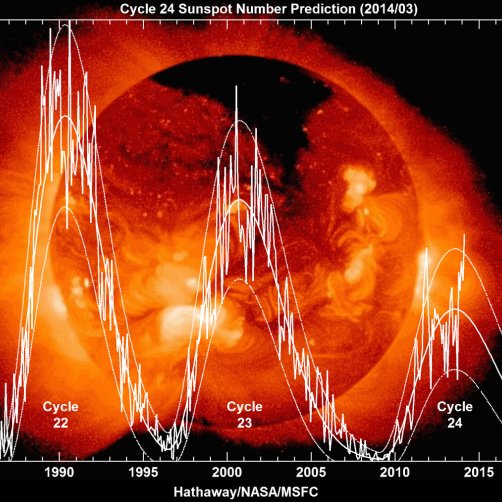Having solar can feel good or be a little disappointing, if you have had solar, then you know about the ups and downs that occur. For most new comers the first year of excitement and being glued to the stats can lead to some questions about Solar performance.
We have written quite a few articles on solar panel alignment and having two solar arrays to get the most from solar and why roof mounted solar is not the best and why the “average” is generally wrong for most installations.
Without going all techy, there are many factors that change how solar works, there is the obvious and the not so clear stuff that most people wont even know about, such as the solar cycle. or the space cloud we are flying though as a planet or how the gulf stream or el Nino effects things and what are the cycles and timelines…. And you just thought it was point the panels south and the sun is good…
How Solar panels perform requires a few factors to be taken into account, the source ( the sun), the suns solar cycle, the space between, the earths atmosphere, the earths tilt, the suns angle, and the weather.
What concerns us the most here is the suns radiance.

The above chart, is a lot misleading as the wider view shows the rise in the suns activity. However the information shows a broad average. In the chart below we can see more details of the solar cycle.

In this chart from https://crondallweather.co.uk/ we can see he yearly and monthly difference within the the last four years. What also should be taken from this is the kW/m2 data shown in the chart as well as STC data that is available on solar panel data sheets. (Note this chart does not complete Nov 2024)
We can take from this that between February to October we are within the range of STC. We can also see on the maximum that there is about 20% variation over the years. but as you can see the sun and the solar do not align to the expected out come – higher sun activity dose not mean higher solar yields.
The reason for this is that we have a atmosphere and as we heat up we add more water to the atmosphere and this makes the atmosphere thicker which defuses the sunlight on the panels.
Its worth understanding that solar panels don’t use light, but certain waves of light. often with the sun comes heat, and on your panel data sheet you will see the impact this has and I’m sure you notice over the year in any event.
Sun hours.
Sun hours are the important hours when it comes to solar, we don’t use any old light but a certain wave of light that powers the panels. We would have to take into account the irradiance from the above chart, and the sun hours from the chart below.

For year 2020 the total sun hours was: 50.3 irrads max avg was 1276 (incomplete)
For year 2023 gives us 51.2 sun hours and the average irrads max avg was 1161.
While averages do not work for solar at all, the actual difference between 2020 and 2023 was a decline by 10-17% is solar yields. between 2023 and 2024 there was a 5% decline making the period between appear to lose around 20% in performance from the solar installations.
For those wanting to know when solar power should return, it will be in two years. but you should keep in mind that it will decline to meet with the solar cycle of 7 years.
As you may notice from the chart at the top, solar irradiance is above 1000w.m2 as set out in STC and sits around 1361w/m2 The amount of irradiance has grown over the past century or so.
This rise will make the planet warmer and wetter both of which can be a detriment to the yields from solar panels. Its my view that solar panels will be a thing of the past in 200 years, if not 100 years.
But not to fear, in 10-17 thousand years they will be good again when you look at the earths larger climate cycle.

Here are the missing numbers for November, and here is the seasonal chart in KWh with the lows showing in the averages. Knowing this information should help you understand how your solar is performing and what has had effect on solar.
Note that there has been less rain fall due to more heat in the atmosphere, this causes a more dense layer for the sun to get though, if its rains there are clearer sky’s.


No responses yet